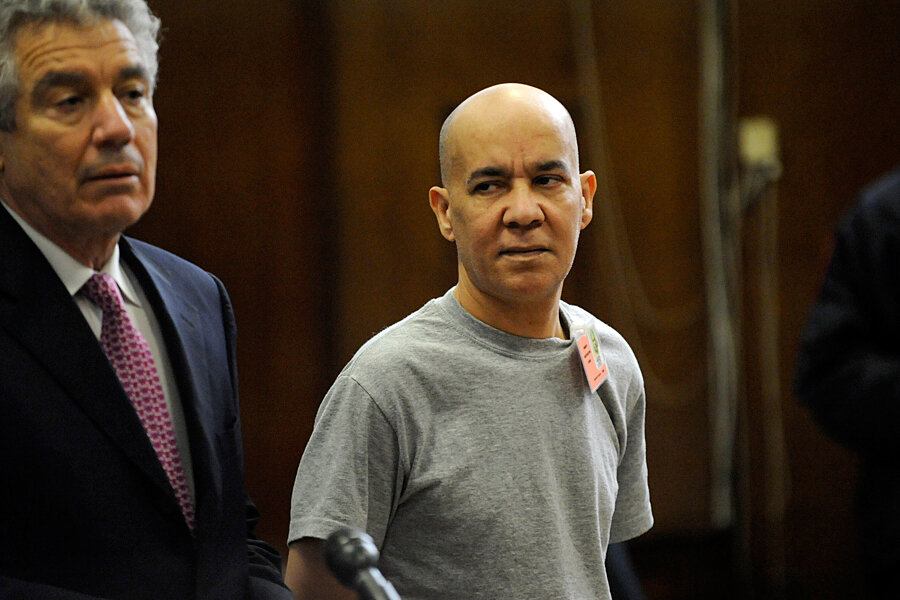Etan Patz's murder trial opens 35 years after boy's disappearance
Loading...
| New York
The little boy named Etan Patz was a "tiny man with a big heart" who couldn't wait to walk to his school bus stop alone on the day he vanished, a prosecutor said Friday.
Patz's "beautiful little life" was snuffed out the very day he achieved that childhood freedom in 1979, Manhattan Assistant District Attorney Joan Illuzzi-Orbon said as she began the trial of Pedro Hernandez, a mentally ill man who worked in a nearby shop at the time and confessed to killing the boy many years later.
The prosecutor's opening statement evoked a scene from another era, a time before cell phones or laptops, when even in New York City, children "played outside until their mothers called them home at dinner time."
"A time when hippies, not hipsters, graced the streets of downtown Manhattan. This is the moment we're about to step back into, and into a crime that changed the face of this city forever, a cautionary tale and a defining moment, a loss of innocence," Illuzzi-Orbon said. "This was the moment in time when Etan Patz lived, and it's the moment in time when Etan Patz died."
Both Hernandez and Etan's father, Stan Patz, sat stock-still as the prosecutor spoke. Hernandez' wife, Rosemary, was also in the packed courtroom.
Thirty-five years after Etan disappeared in a case that shaped the nation's approach to missing children, Hernandez is going on trial for his murder and kidnapping.
Hernandez emerged as a suspect in 2012, based on a tip from his brother-in-law, who had been trying to alert authorities for years after Hernandez alluded to the crime in remarks to friends and relatives in the 1980s, the prosecutor said.
The defense hinges on convincing jurors that the confession is false, and suggesting that the real killer may be a convicted Pennsylvania child molester who had been a prime suspect for years.
"It will be, I think, an extremely interesting case," state Supreme Court Justice Maxwell Wiley told prospective jurors earlier this month, adding that those chosen would be in for "an experience they'll never forget."
In considering evidence that reaches back to 1979, jurors will delve into a missing child case that helped inject a new protectiveness into American parenting. Last seen walking alone to the bus stop, Etan became one of the first missing children featured on milk cartons. His parents advocated for legislation that created a nationwide law-enforcement framework to address such cases. The anniversary of his disappearance is now National Missing Children's Day.
The trial is expected to last up to three months and feature witnesses including Etan's mother, psychologists, an inmate informant who knows Hernandez, and possibly other informants testifying against the earlier suspect.
The seven-man, five-woman jury was chosen from a pool of about 700 people. Some openly wondered about bringing a case to trial after so many years.
Prosecutors have spotlighted Hernandez's videotaped, hours-long confessions, in which he says he offered Etan a soda to entice him into the basement of the Manhattan convenience store where Hernandez worked. Then, Hernandez said, he choked the boy and dumped him, still alive, in a box with some curbside trash. Etan's body has never been found.
"Something just took over me, and I was just choking him," said Hernandez, 54, of Maple Shade, New Jersey. "He just kind of stood there, and I just felt bad, what I did."
Defense lawyers say Hernandez' confession is fiction, dreamed up by a mentally ill man with a low IQ and a history of hallucinations — and fueled by over six hours of police questioning before Hernandez was read his rights.
After confessing, Hernandez told a defense psychologist his memory of the killing "feels like a dream" and he wasn't sure it had really happened.
Hernandez's lawyers also plan to point to longtime suspect Jose Ramos, a Pennsylvania prisoner who dated a woman who sometimes cared for Etan. Authorities said Ramos made incriminating statements when questioned about Etan in the 1980s, though he never confessed to killing the boy. Ramos has denied it, but a civil court found him liable for Etan's death in 2004 after Ramos stopped cooperating with questioning.
___
Associated Press writer Colleen Long contributed to this report. Reach Jennifer Peltz on Twitter @jennpeltz.







